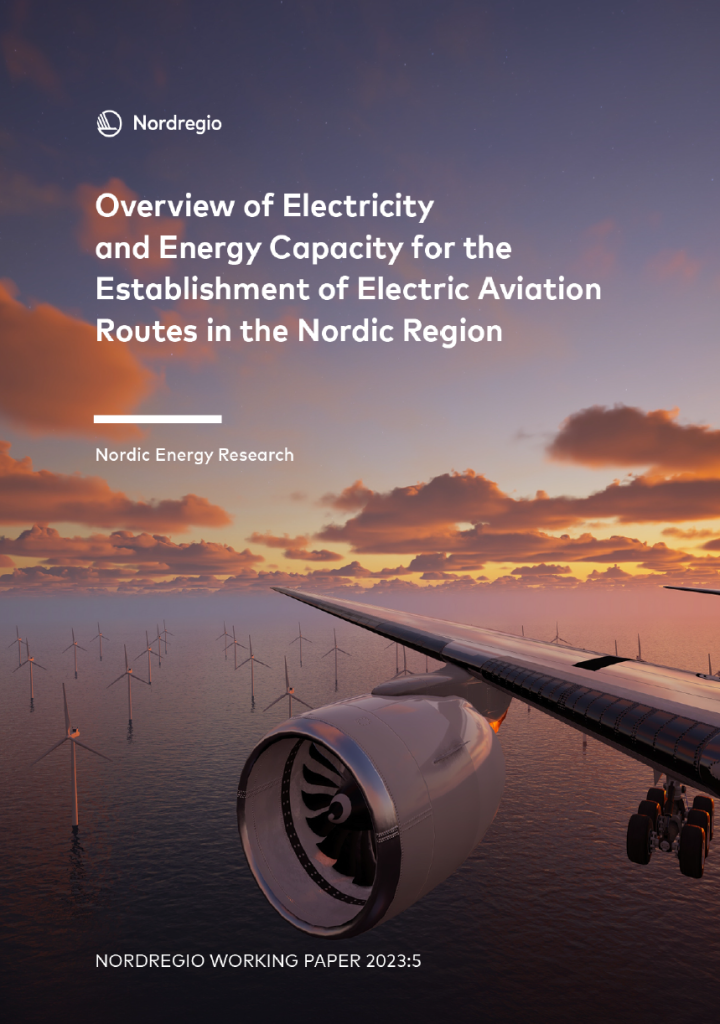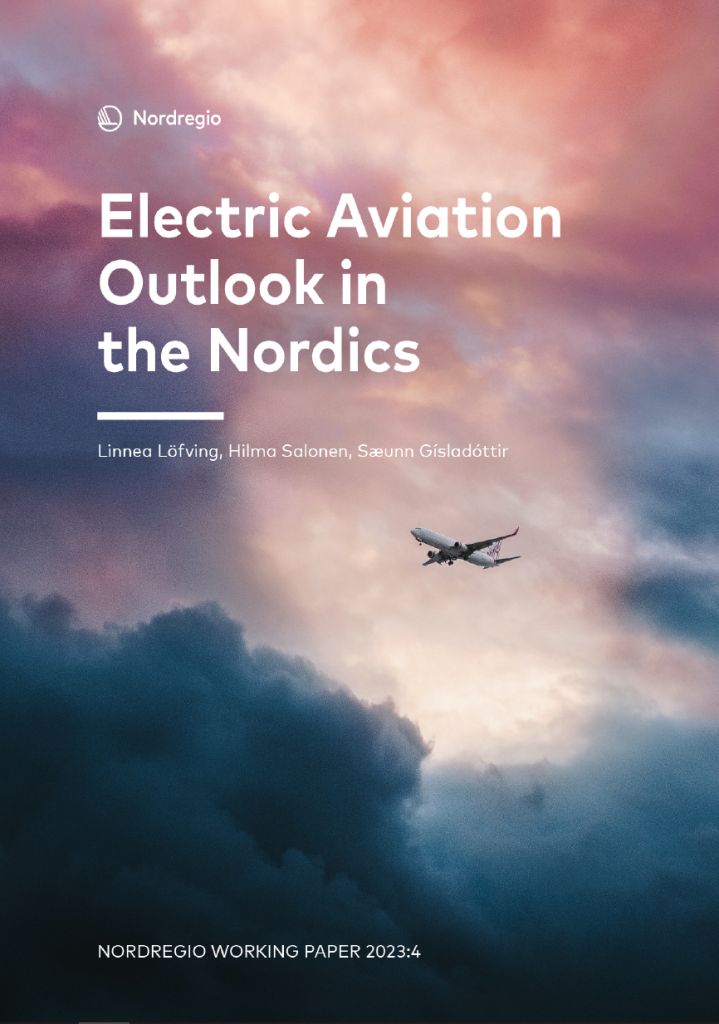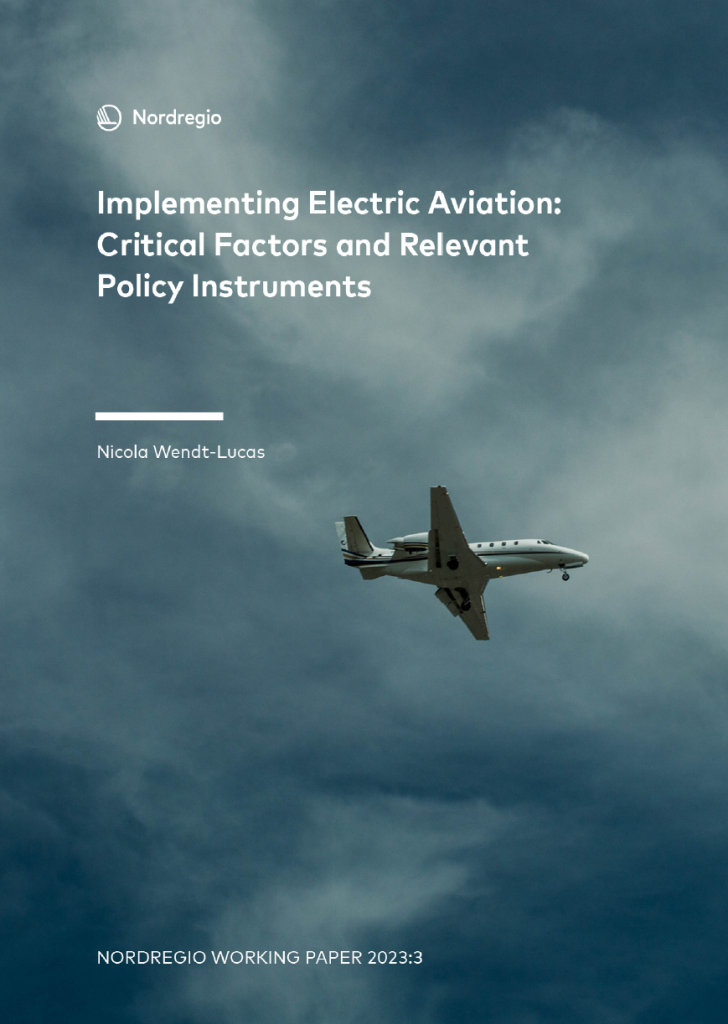Nordic countries have ambitious plans and commitments to promote sustainable flight solutions by introducing electric aircraft for short-haul domestic and cross-border flights. How far is it becoming a reality? What infrastructure, policies, interests and concerns are a help or hindrance? Join the discussion about the Nordic electric aviation development, inspired by three newly conducted Nordregio studies in collaboration with Nordic Energy Research and the University of Akureyri.
Which Nordic routes will be the first to go electric?
Earlier this year, Nordregio published an accessibility study that identified over 200 potential electric aviation routes in the Nordics. This would significantly cut travel time compared to those going by both car or public transportation and yet be a more sustainable mobility solution. However, the feasibility of introducing the necessary infrastructure crucially depends on energy demands and availability.

The publication “Overview of Electricity and Energy Capacity for the Establishment of Electric Aviation Routes in the Nordic Region” dives deeper into this exact dilemma and outlines the regional power availabilities.
“I hope this publication will enlighten the possible pathways for the Nordic Region to remain a frontrunner in the decarbonisation of aviation transportation,” says Klaus Skytte, CEO of Nordic Energy Research, one of the publication’s authors.
What stands in the way of electric aviation in the Nordics?
The Nordic countries are known for their low population density, breathtaking geography with fjords, lakes, and mountains, and a strong focus on sustainable energy. However, each country’s context varies.

The working paper “Electric Aviation Outlook in the Nordics” sketches out the different particular interests of the five Nordic countries when looking to introduce electric aviation and the concerns that follow.
“We foresee benefits that go well beyond environmental sustainability. Electric aviation in the Nordic region can become a great tool for connecting remote areas, opening new pathways for expanding labour markets and boosting regional development. It will be exciting to see concrete and context-specific possibilities in all the routes we selected as case studies,” says Rebecca Cavicchia, the Project Manager and Research Fellow at Nordregio.
Take Finland, for example. Electric aviation could improve connections to remote areas and improve regional competitiveness and tourism, yet substantial investments will be needed. Norway could reduce the environmental impact of travels connected to medical care, family and recreation. In Iceland, support for electric aviation is strong, both for environmental reasons and to further regional development. At the same time, an important concern is electrical safety.
“It is exciting how soon electric aviation could become a reality in domestic flights in the Nordic countries. For instance, Icelandair has stated that the 30-seat electric airplane, developed by Heart Aerospace, could be used on all domestic routes, and it is estimated that it will be used for passenger transport in 2028,” says Sæunn Gísladóttir, Researcher at the University of Akureyri Research Centre.
Which policy initiatives are needed in the Nordics?
“Electric aviation can potentially reinforce the Nordics’ position as a sustainability pioneer. Yet, past studies have shown us that several challenges remain. Battery safety, political commitment, and questions on resource extraction are three key issue areas,” says Nicola Wendt-Lucas, Research Fellow at Nordregio, explains.

The working paper “Implementing Electric Aviation: Critical Factors and Relevant Policy Instruments” discusses critical factors that challenge further development and establishment of low and zero-emission aviation in Nordic countries. It also suggests possible policy instruments needed for implementing electric aviation.
About the project
The project “Electric Aviation and the Effect on Nordic Regions” investigates how the implementation of electric aviation will affect regions and local areas in the Nordics. The series of studies analyse effects on local communities, the labour market, the environment and climate, and the need for developing infrastructure and policies.
Related Research Projects
Related Publications
- Accessibility study for electric aviation
- Electric Aviation Outlook in the Nordics
- Implementing Electric Aviation: Critical Factors and Relevant Policy Instruments
- Overview of Electricity and Energy Capacity for the Establishment of Electric Aviation Routes in the Nordic Region
- Ten-year Regional Outlook: Future Perspectives for Electric Aviation in the Nordic Region






